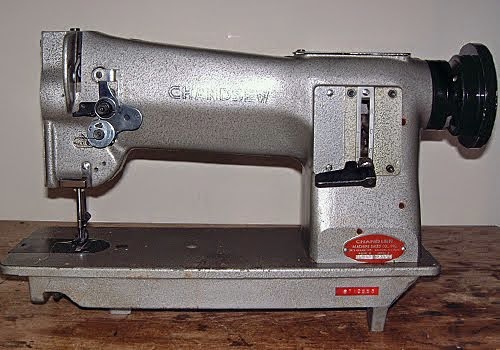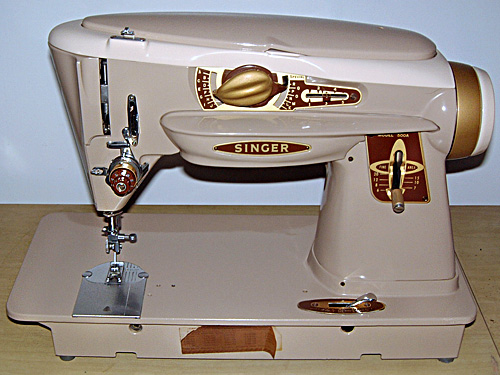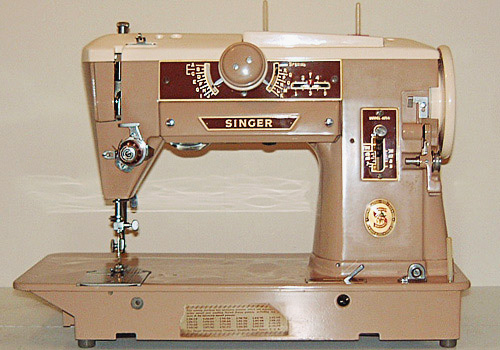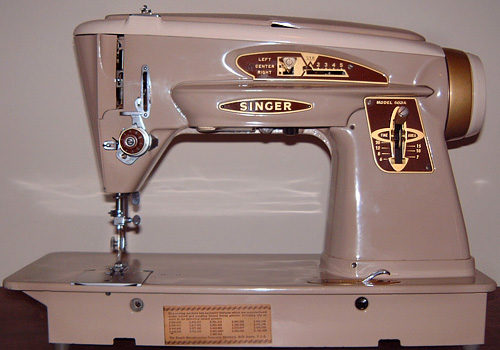Buying, selling, servicing, using... thoroughly enjoying these marvels of mid-century domestic engineering.
Chandsew 406RB

Size Matters

Singer 153W103 Industrial

Singer 316G

Singer 301

A design revolution for Singer, this light-weight portable is a favorite with quilters. This example dates from 1951, but, interestingly, isn't badged as an anniversary model.
Singer 221- Featherweight

In remarkable condition. This one dates from 1956.
Singer 500A

Reassembled and polished.
Singer 401A

Singer 503A

I've had a number of examples from the 400 and 500 series pass through my hands now, and as testament to their quality, they have all been in very nice condition; none, however, has matched this beauty for its near pristine state of preservation. While even on the cleanest example one must forgive a minor imperfection or two, this classic from Singer exhibits none! Truly as nice as one could hope.
Saturday, May 18, 2013
New Directions
My interest in vintage sewing machines has taken a turn; I'm now enjoying those machines intended for industrial use - more specifically, those used for sewing leather.
My wife,Mary, was given quite a bit of upholstery leather and, in order to get the most out of it, I picked up a Consew 206RB-3 walking-foot industrial; not what one would call vintage, necessarily, but an older and well-made machine. Unfortunately, it took up more space than I felt able to allot it at the time and I sold it to a sewist who will make great use of it. I'm now back in that market, looking for another compound walking foot (I've since made room in my hobby room by lightening my collection of vintage domestic machines) after seeing Mary turn out a couple of leather pillows on her Singer 316. How much easier it would be to do that on a walking foot! I sometimes kick myself for having just sold the Consew before this revelation.
You'll note at the top of this page photos of my latest acquisition, a 1944 Singer 29K60 Patcher. I intend to run a few simple leather projects through this machine, but even if it doesn't prove practical, it's been fun to work on, a chance to learn something new, and reason to keep my hands in the game.
I learned early on that while collecting vintage sewing machines was an easy and enjoyable hobby, collecting cabinets wasn't a practical part of the plan; there was certainly no room for the many cabinets, tables and desks that came with the many machines that passed through my hands.
So, vintage industrials? Yes, with a nod to the obvious: no room at all for industrial-size tables with their massive weight and near immobility. I believe I'll have to focus on what enjoyment there might be in bringing the once tried and true, now old and tired, back to life, and see that they make their way into the hands of those who can make good use of them. I may keep one or two for the projects I'd like to do, but no collecting this time. I see a slower, more deliberate pace, and if I'm able to garner the fruits of light labor, in the way of a few successful projects in leather, then I'll count myself lucky to have taken this new path.
Subscribe to:
Posts (Atom)